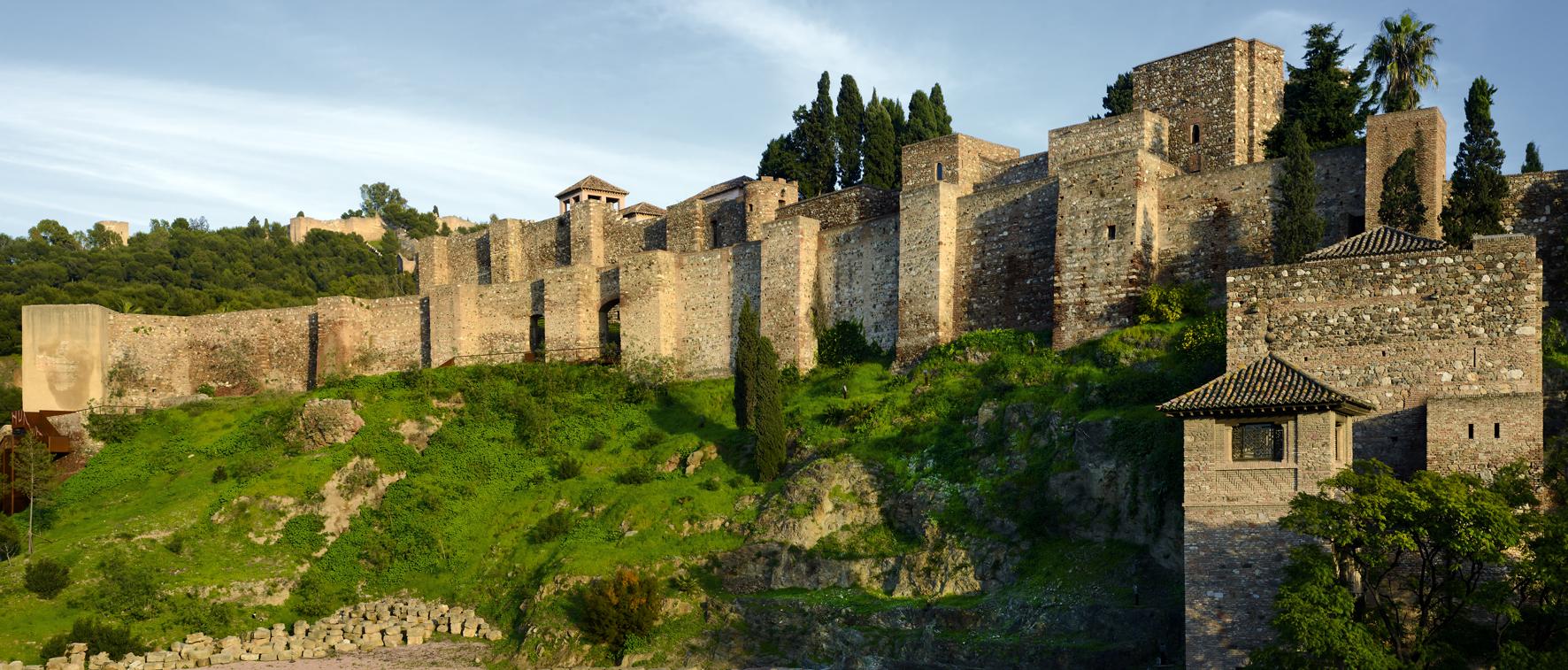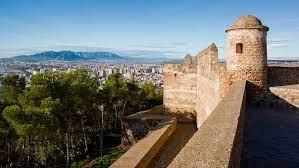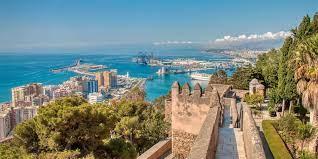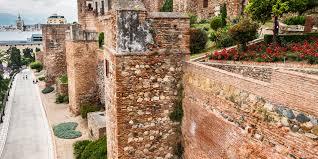



Gibralfaro Castle
This castle dates from the 14th century and its main function was to house troops and protect the Alcazaba. Its name comes from the lighthouse at the top, Jabal-Faruk (lighthouse mount). Long considered the most impregnable castle in the Iberian Peninsula, it consists of two lines of walls and eight towers.
![]() Centro histórico
Centro histórico
![]() https://alcazabaygibralfaro.malaga.eu/es/
https://alcazabaygibralfaro.malaga.eu/es/
![]() Camino de Gibralfaro, 11, 29016
Camino de Gibralfaro, 11, 29016
Services
- TIMETABLES
SUMMER OPENING HOURS (1st April - 31st October)
09:00 - 20:00 hours, with last admission at 19:15h.
Sunday free from 14:00 until closing time.
WINTER OPENING HOURS (1 November - 31 March)
09:00 - 18:00 hours, with last admission at 17:15h.
Sunday free from 14:00 until closing.
- RATES
Normal rate: 3,50 €.
Reduced admission (students, retired, disabled, children): 1,50 €.
Joint visit Alcazaba-Gibralfaro: 5,50 €.
Free visit every Sunday from 14:00 h. until closing time.
- ACCESS
Gibralfaro Castle can be accessed from two areas and in various ways:
- Through the historic centre;
On foot: Along the Paseo de Don Juan Temboury, next to the entrance to the Alcazaba of Malaga, there is a path leading to Gibralfaro Castle. It is a one-kilometre route with a certain amount of uphill slope, which is not recommended on very hot or rainy days.
- Up the Camino Nuevo;
Tourist Bus: The red route of this bus stops at the Gibralfaro Castle. Click here to consult the routes and stops of the Malaga tourist bus. https://city-sightseeing.com/es/24/malaga/3310/premium-experience-malaga
Local Bus: The bus line 35 of Empresa Malagueña de Transportes starts its route in the Alameda Principal of Malaga and ends at the Gibralfaro Castle. The frequency is approximately every 30 minutes.
Car: Gibralfaro Castle has a public car park next to the main entrance.
From time immemorial, this fortress has been the great watchtower not only for observing the population settled at the foot of its western slope, but also the accesses to it by land and sea. It occupies an area of 21,310 m², including Coracha and Barbican, with a perimeter of 1,310 metres of wall. The inner enclosure occupies 12,630 m², and is enclosed by a strong wall measuring 733 m. and consisting of 30 walls and 8 towers, most of which are massive.
It has a strategic position, overlooking the whole city and the bay from the hill. It is worth bearing in mind the imposing image these fortifications offered in their time, when the hill was completely devoid of vegetation to facilitate defence and avoid ambushes. Its only access was through a monumental gateway, which was accessed from the Coracha and connected to the barbican that surrounds the entire outer perimeter. It has the typical layout of a "bent" doorway, opening into a large keep that is protected by a double door that cuts through the barbican, and which forms a small courtyard inside with an area for the guard force. Its vault preserves a beautiful example of brickwork, in brick cut in a loop of eight, and on the inside another loop of twelve glazed in white, black and blue.
Access to Gibralfaro is currently via open passages in the area of the barbican to the east and in one of the walls on the south front, next to the Interpretation Centre. There are three other gates perforated in the walls, all dating from the Christian period, and open in order to facilitate access to the interior for supplies or military equipment.
The upper part of the walls forms the parapet or sentry walk, crowned at its greatest extent by a line of merlons, topped by pyramids that are partially lost. The foundation of the walls, the foundations and the plinth are masonry, made of medium-sized stones and slate rubble, worked with lime and sand, and the upper part is made of rammed earth, all of which is plastered with lime mortar to make it waterproof and regular. In some sections, the decoration can still be seen painted in imitation of large ashlars. The arches, vaults, jambs and the interior areas of the doorways are mostly made of brick, as a result of the numerous repairs carried out at different times.
The barbican that completely surrounds the castle is in perfect condition as it was largely rebuilt in the Christian period.
Within the castle enclosure, we must highlight the Pozo Airón, a 40-metre deep well dug into the living rock, which leads to a water spring that still exists today, and a system for collecting rainwater which, through the use of masonry ditches, carries it to several underground cisterns, all covered with brick vaults, except for the largest of them, which is octagonal in shape and emerges in the centre of the fortification. Also preserved are two Christian-built bread ovens, several sentry boxes of different periods, types and locations, and the old gunpowder magazine building, now converted into an Interpretation Centre.
After the occupation of Gibralfaro by the Castilian troops, its mosque was consecrated as a church under the patronage of San Luis obispo. From that time on, the fortress was used as a barracks and prison, until 1925, when it was ceded to the Town Hall and put to public use.
The strategic importance of Malaga justified the fact that since its conquest the Catholic Monarchs allocated the tithe on lime, tiles and bricks for the repair and conservation of the city's fortifications.
During the War of Independence, the castle was the object of important fortification works and the scene of several events. Faced with strong pressure from the Spanish army and the guerrillas against the French occupation from 1812 onwards, the French began their retreat from Andalusia. In Malaga they blew up all the fortifications they had built in Gibralfaro, while the last French army units were leaving the city. The mines laid in the castle blew up the New Tower, the outer defences, the barracks, the Malecón battery and the gunpowder storehouse. In 1977, the task of demolishing the military buildings was completed and the gardens were laid out to make them more accessible to tourists.